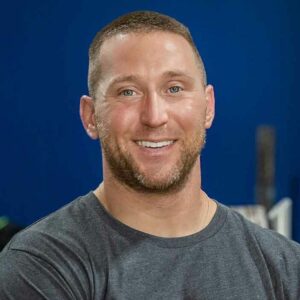The last thing an athlete wants to see is a decrease in their performance outcomes, especially after putting in the time, effort, and energy throughout off-season. We’ve spent a lot of time and hard work to get the results we’ve been chasing after, we need to ensure we’re doing everything we can do at the very minimum, maintain the performance outcomes we gained. This isn’t to say athletes can’t continue to make slow, gradual improvements during the season, especially when the season is 6-8 months long. That is a long time just to maintain performance when there are numerous ways we can approach in-season training to make these slow, gradual improvements in performance.
Always keep in the mind, the main goal in-season it to optimize performance on the playing field and get athletes as close to 100% game readiness. How we go about managing overall workload will play a huge role for us. In addition to workload, we need to look at other factors such as sleep, nutrition, hydration, and supplementation as they will all dictate an athlete’s readiness level day-to-day.
The last thing I want to do is give an athlete something more of what they’re already getting on the playing field during practice and/or games. With practice and games, there is already a high workload of sprints, rotational work from hitting and throwing, and agility work from all the ground balls and fly balls position players are taking. The last thing I want to do is add more volume in these areas.
If anything, we will incorporate some light medicine ball work, agility work as an extension to the dynamic warm-up to prepare baseball players for these demands on the field. This may address an area that is deficient, and we need to reinforce proper technique and patterning to optimize hitting and throwing mechanics.
I know a lot of baseball players who like to perform 1-2 light sets of rotational and overhead medicine ball work to prepare themselves prior to hitting and throwing. We may also incorporate some agility drills to reinforce good technique with their ability to accelerate, decelerate, and change directions. The focus is to fill in the gaps and areas of deficiency to give baseball players what they are not getting on the playing field.
To reinforce, it comes back to giving baseball players what they’re not getting on the playing field. We will perform our daily non-negotiables such as addressing mobility deficits in our warm-ups and post-training period. We’re placing a heavy emphasis on daily recovery by doing additional mobility work for those players that require it. In addition to that, staying on top of and tracking fluctuations in bodyweight to ensure they’re getting in enough calories to maintain a comfortable playing body weight.
We’ve seen over the course of time when body weight begins to drop off, other performance metrics such as strength and power slowly decline. Maintaining the same levels of force production is challenging in-season. There are numerous ways baseball players can get in additional calories throughout the day, especially on game days. I always encourage them to be prepared in advance by packing snacks such as nuts, protein bars, protein shakes, peanut butter and jelly sandwiches, something that will help them replenish their electrolytes, etc.
In the following article I will outline how we approach getting our work in the weight room during the season. The high school spring baseball season is drastically different compared to the summer travel baseball season. There are differences between position players and pitchers, even more so if you’re a starter or relief pitcher. There are also differences between players who start consistently compared to players who don’t get that much playing time. Non-starters can take advantage of making performance gains as they are usually well rested. We’ll outline several examples of how we approach working with each of these players so they can maximize performance and stay healthy throughout the season.
Contact: Kip Steingart, Owner Top Performance Strength
Email: support@topperformancestrength.org
Cell: (847)542-5213
Website: www.topperformancestrength.net


